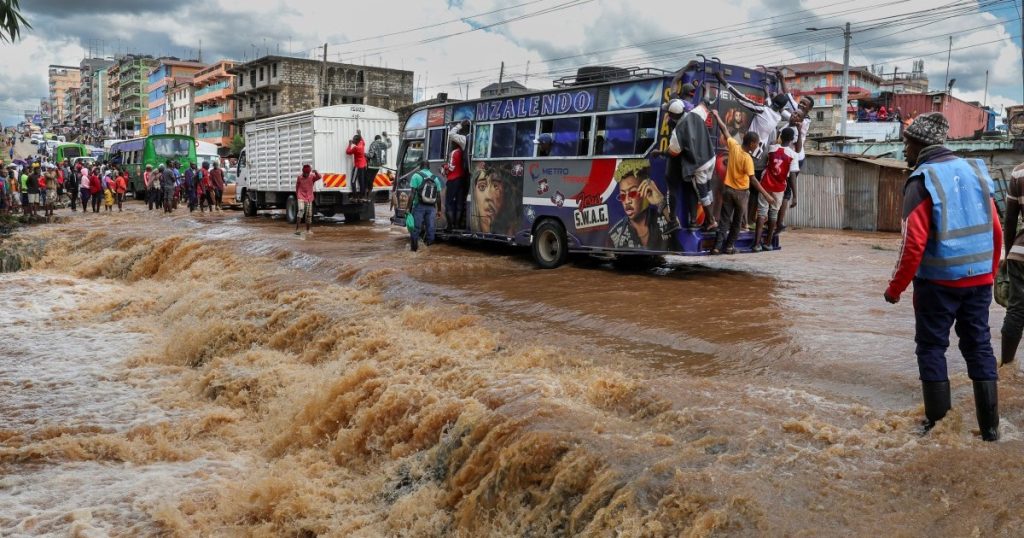Storms and flash floods have wreaked havoc across Nairobi, Kenya, resulting in at least 10 fatalities and displacement of approximately 60,000 individuals, primarily women and children. The relentless downpours in recent weeks have been exacerbated by the El Nino weather pattern, causing roads to turn into gushing rivers and swamping homes with waist-high muddy water. Vehicles were stranded in the deluge, and residents in slum areas were forced to wade through floodwaters in search of safety.
The Kenya Meteorological Department issued warnings of continued heavy rainfall in various parts of the country until May, further exacerbating the flooding situation. In response to the growing crisis, the Nairobi county governor’s office reported that tens of thousands of people have been severely affected by the floods. The situation became so dire that police had to intervene and disperse angry residents protesting the lack of government action by blocking a main highway.
As a result of the flooding, Kenya Railways announced the temporary suspension of commuter train services, and the roads authority stated that four roads in the capital had to be partly closed. The sprawling Nairobi slum of Mathare was particularly hard-hit, with homes being engulfed in water and residents taking to rooftops to save themselves and their belongings. The Red Cross reported that the Athi River had burst its banks, blocking roads and leaving residents stranded in the area.
In addition to the crisis in Kenya, neighboring countries in East Africa have also been impacted by the severe weather conditions. Nearly 100,000 people have been displaced in Burundi, while at least 58 individuals have lost their lives in Tanzania, with several thousand others left homeless. The region, which is already vulnerable to climate shocks, is experiencing the devastating consequences of the El Nino weather phenomenon, highlighting the urgent need for coordinated disaster response efforts and long-term climate adaptation strategies.
The challenges posed by the ongoing flooding in East Africa are significant, as governments and humanitarian organizations work to address the immediate needs of affected populations and provide essential services such as shelter, clean water, and healthcare. The situation is further complicated by the disruption of transportation and communication networks, as roads are blocked, and train services are suspended. With the forecast of continued heavy rainfall, the risk of further flooding and landslides remains high, necessitating a coordinated and comprehensive response to mitigate the impact on vulnerable communities.
In conclusion, the devastating effects of the storms and flash floods in Nairobi and the broader East Africa region serve as a stark reminder of the urgent need for climate resilience and disaster preparedness measures. As the region grapples with the aftermath of the severe weather events, it is critical for governments, humanitarian organizations, and the international community to work together to support affected populations, strengthen infrastructure, and build capacity for future climate-related challenges. By taking proactive measures to address the impacts of extreme weather events, East Africa can enhance its resilience and ensure the well-being of its people in the face of ongoing climate change.













